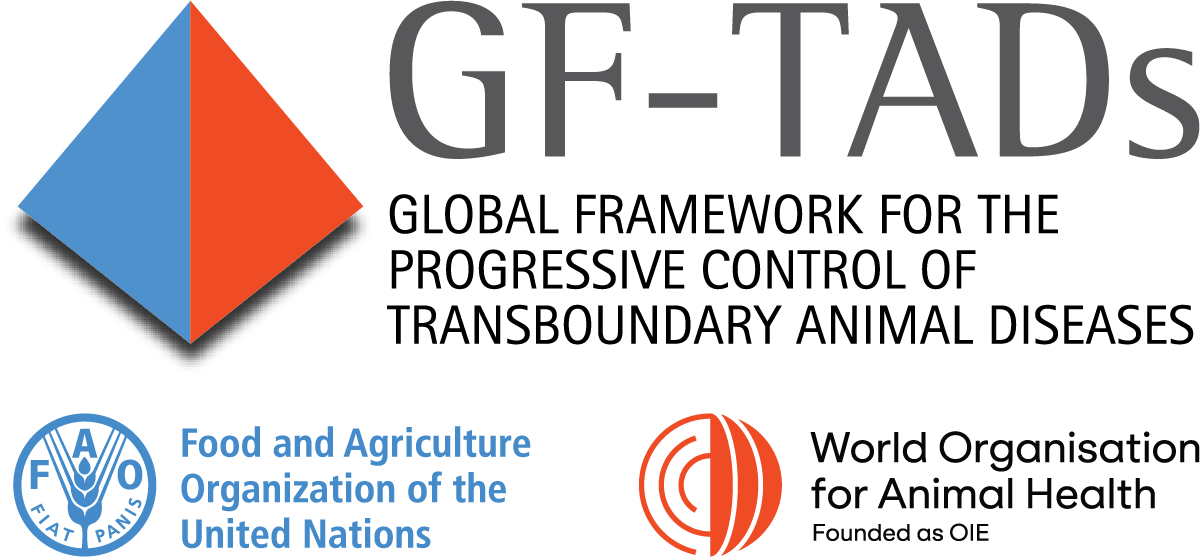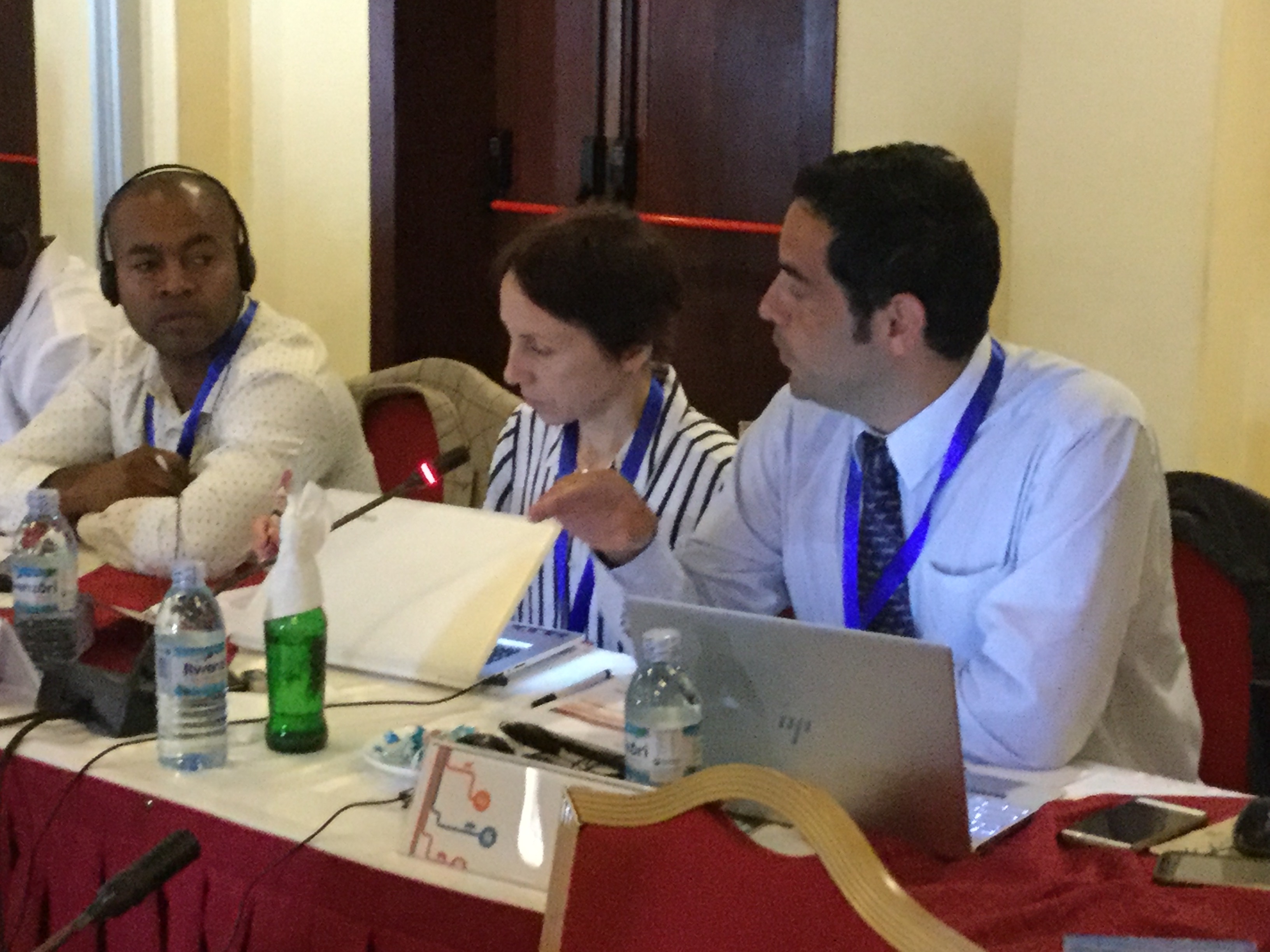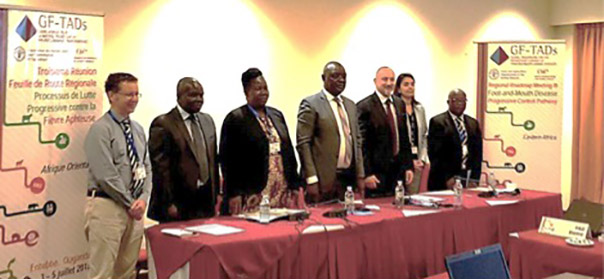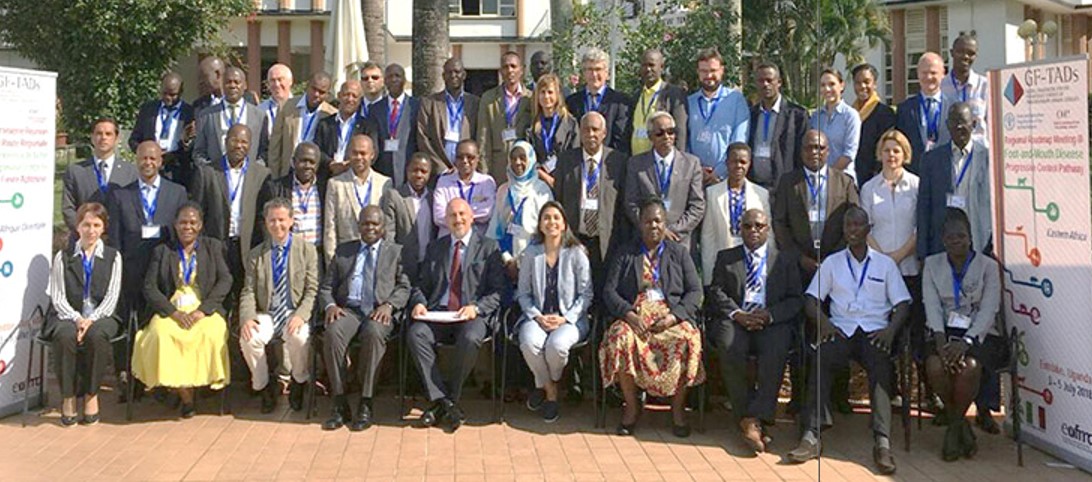
In order to reduce the FMD burden, the Food and Agriculture Organization of the United Nations (FAO) and the World Organisation for Animal Health (OIE) developed a 15-year Global FMD control tool in 2012 known as the Foot and Mouth Disease Progressive Control Pathway (FMD-PCP). Since its development, the tool has been embraced by all veterinary authorities within the Eastern African countries to help in the control of the disease of which the commonest pool of FMD viruses in the region belong to pool 4.
Dr Gregorio Torres, OIE Science and New Technologies Department, Paris, taking the floor. Picture © S. Wakhusama (oie) 2018.
Since the Global FMD control Strategy was endorsed, several initiatives were identified to establish an enabling environment to make FMD control a feasible option, particularly for countries that are affected the most by this disease. In the framework of its 6th Strategic Plan, under Strategic Objective 1 on “Securing animal health and welfare by appropriate risk management”, the OIE is supporting its member countries through coordination of disease control / eradication (including Global Strategies for FMD, peste des petits ruminants –PPR- and rabies).
The high table during the opening ceremony. From left to right : representatives of EuFMD, AU-IBAR, Uganda (DVS), Uganda (MAAIF), Italy, FAO and OIE.
Foot and Mouth Disease (FMD) severely affect the production of livestock, disrupting regional and international trade in animals and animal products. That detrimental impact of FMD is exceptionally relevant in developing countries, where the losses in production, utility and income can even have a significant effect on livelihoods and food security, especially for small holders but also on trade among large producers.
Following the FMD-PCP workshops held in Nairobi (2012) and Kigali (2014), the current workshop held in Entebbe, Uganda from 3rd to 5th July, 2018 was the third in the Cycle of these workshops for Eastern African region. A total of 44 participants including OIE Delegates and their FMD country focal points were drawn from 11 countries including Burundi, Comoros, Democratic Republic of Congo, Eritrea, Ethiopia, Kenya, Somalia, South Sudan, Sudan, Tanzania and Uganda; regional and international experts from Regional Economic Communities, i.e. the East African Community (EAC) and the InterGovernmental Authority on Development (IGAD), the Interafrican Bureau for Animal Resources (AU-IBAR) and the Pan-African Veterinary Vaccines Centre (AU-PANVAC) of the African Union; the OIE FMD Reference Centres, i.e. the Botswana Veterinary Institute (BVI) and the FMD World Reference Laboratory at the Pirbright Institute, Deloitte, the European Commission for the Control of Foot-and-Mouth Disease (EuFMD), FAO, and OIE. Several producers of foot-and-mouth disease vaccines (Boehringer Ingelheim Animal Health and ME-VAC) were also represented.
Djibouti did not attend the meeting while Rwanda made their presentation via a video link.
The opening ceremony was held at the Lake Victoria Hotel and was graced by the Uganda Minister of Agriculture, Animal Industries and Fisheries (MAAIF), the Hon. Ssempijja Bamulangaki, alongside H.E Domenico Fornara, Ambassador of Italy in Uganda; Dr Henry Wamwayi, representing Director AU-IBAR, Dr Keith Sumption, Executive Secretary, EuFMD, Ms Priya Gujaphur, Acting FAO Representative, Uganda; Dr Ademun Rose Okurut, OIE Delegate for Uganda and Dr Samuel Wakhusama, OIE Sub-Regional Representative for Eastern Africa.
During the meeting, participants elected a new Regional Advisory Group (RAG) officials from Uganda, Kenya and Sudan of which the Ugandan Delegate was appointed the Chair of the RAG. Besides chairing various plenary sessions, the RAG, behind closed doors, assessed the countries control pathways status.
Several facilitators from FAO Rome, OIE offices in Paris, Astana and Nairobi; the World Reference Laboratory for Foot-and-Mouth Disease in Pirbright; the Botswana Veterinary Institute in Gaborone; the Ethiopian National Animal Health Diagnostic and Investigation Centre (NAHDIC, representing the Eastern African Regional Laboratory Network); the Ugandan National Animal Diseases Diagnostics and Epidemiology Centre (NADDEC, representing the Eastern African Regional Epidemiology Network) and the European Commission for the Control of Foot-and-Mouth Disease (EuFMD) , made various presentations and guided discussions.
At the end of the meeting, participants agreed on recommendations and thanked Uganda for hosting the 3rd GF-TADs regional FMD roadmap meeting. The next Regional FMD Roadmap meeting will target central African countries before the end of the year.
All pictures © FAO (EuFMD) 2018, unless mentioned otherwise.
PDF - 1.29MB
PDF - 1.27MB




